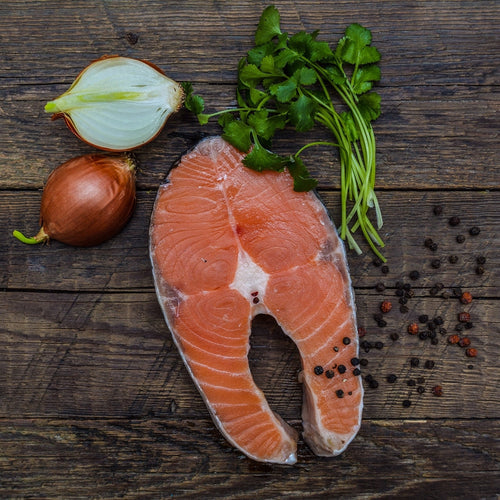Рацион и особенности питания нерки

Повадки нерки
Нерка ( Oncorhynchus nerka ), также известная как нерка, имеет интересный и сложный рацион, который меняется на протяжении всего жизненного цикла. Их пищевые привычки, варьирующиеся от потребления микроскопического планктона до мелких ракообразных, играют ключевую роль в их росте, яркой окраске и выживании. Понимание особенностей питания нерки даёт ценную информацию о её экологической роли и здоровье морских и пресноводных экосистем.
Откройте для себя нерку и другие морепродукты высочайшего качества в Global Seafoods . Познавательные видео и советы смотрите на нашем канале YouTube .
Введение: Пищевое путешествие нерки
Нерка — анадромная рыба, то есть она мигрирует между пресноводными и морскими водами в течение своего жизненного цикла. Её рацион значительно меняется на разных этапах жизни, адаптируясь к ресурсам, доступным в каждой среде. Эта способность к адаптации является ключом к её выживанию и успешному размножению.
«Нерка — идеальный природный переработчик отходов, преобразующий питательные вещества из океана в пропитание для пресноводных экосистем», — отмечает доктор Дэниел Шиндлер, эколог, специализирующийся на лососе.
Если вам нужен лосось, выловленный экологически безопасным способом, ознакомьтесь с нашим широким ассортиментом продукции на сайте Global Seafoods .
Рацион нерки на разных этапах жизни
1. Стадия яйца
На этом этапе нерка не питается. Вместо этого она полностью полагается на питательные вещества, запасённые в желточных мешках.
2. Стадия алевина: энергия из желточного мешка
Пищевое поведение
- Мальки остаются в гравийных гнездах, потребляя питательные вещества из прикрепленных к ним желточных мешков.
- Этот этап имеет решающее значение для развития силы, необходимой для появления мальков.
3. Стадия мальков: первые попытки кормления
По мере перехода нерки в стадию мальков она выходит из гравия и начинает активно питаться.
Диета в пресной воде
- Планктон : Основным источником пищи являются мелкие водные организмы.
- Насекомые : Мальки питаются мелкими водными насекомыми и личинками, которые в изобилии обитают в ручьях и озерах.
Привычки питания
- Мальки питаются приспосабливаемо, поедая любую добычу, доступную в их среде обитания.
4. Стадия смолта: переход к соленой воде
По мере того, как мальки становятся смолтами, у них происходят физиологические изменения, которые подготавливают их к жизни в соленой воде.
Рацион во время миграции
- Водные насекомые : важный источник пищи во время их перемещения вниз по течению.
- Ракообразные : мелкие пресноводные ракообразные дополняют их рацион.
Важность питания
Стадия смолта имеет решающее значение для создания запасов энергии, необходимых для выживания в океане.
Познакомьтесь с продуктами, вдохновленными этим этапом жизни, такими как кета . и серебристый лосось .
5. Океаническая фаза: пиковый период питания
Основные источники пищи
В богатых питательными веществами водах северной части Тихого океана нерка потребляет рацион, способствующий быстрому росту.
- Зоопланктон : основу их рациона составляют микроскопические организмы.
- Криль : мелкие ракообразные придают ему характерную красную окраску.
- Мелкая рыба : иногда входит в рацион, особенно для крупных особей.
Стратегия кормления
- Нерка использует фильтрующий метод питания для потребления большого количества планктона и криля.
- Они — приспосабливающие животные, подстраивающие свой рацион под сезонную доступность добычи.
6. Стадия нереста: голодание и запасы энергии
Во время возвращения в пресную воду для нереста нерка полностью прекращает питаться.
Управление энергией
- Запасы жира : нерка полагается на запасы жира, накопленные во время пребывания в океане.
- Катаболизм мышц : в крайних случаях они могут расщеплять мышечную ткань для поддержания энергии.
Цель
Этот период голодания позволяет нерке сосредоточиться исключительно на размножении, тратя всю энергию на свое путешествие и нерест.
Как рацион питания влияет на окраску нерки
Одной из самых замечательных особенностей нерки является ее ярко-красное мясо, цвет которого напрямую зависит от ее рациона питания.
Каротиноиды в их рационе
- Каротиноиды из криля и планктона усваиваются и сохраняются в мышцах.
- Эти пигменты также придают лососю его характерную красную кожу во время нереста.
Экологическая роль особенностей питания нерки
Нерка играет важнейшую роль в переносе питательных веществ между экосистемами.
Круговорот питательных веществ
- Во время нереста нерка переносит питательные вещества из океана в пресноводные системы.
- Их разлагающиеся тела обогащают экосистему, принося пользу растениям, насекомым и другим диким животным.
Часто задаваемые вопросы о диете с неркой
1. Чем питается нерка в океане?
Нерка в основном питается зоопланктоном, крилем и мелкой рыбой в океане.
2. Как меняется их рацион в пресной воде?
В пресной воде молодь нерки питается планктоном, водными насекомыми и личинками.
3. Почему нерка перестает питаться во время нереста?
Они полагаются на накопленные во время нереста жировые запасы, чтобы направить всю энергию на воспроизводство.
4. Что придает мясу нерки красный цвет?
Красный цвет им придают каротиноиды, содержащиеся в их рационе, особенно криль и планктон.
5. Как приготовить нерку дома?
Попробуйте продукты, полученные из экологически чистых источников, например филе нерки . для гриля или запекания.
6. Где я могу узнать больше о нерке?
Посетите наш канал на YouTube для просмотра образовательного контента.
Заключение: Комплексный рацион нерки
От пресноводных истоков до океанических приключений, рацион и пищевые привычки нерки играют ключевую роль в её выживании и экологической значимости. Способность нерки адаптироваться к различным источникам пищи подчёркивает её устойчивость и роль в круговороте питательных веществ.
Откройте для себя нерку и другие морепродукты высочайшего качества в магазине Global Seafoods . Для получения дополнительной информации о морепродуктах посетите наш канал на YouTube .
Нужны дальнейшие уточнения или дополнительный контент? Дайте мне знать!
Также в Новости

Как приготовить суши с дорадо и роллом из выдержанного тунца и краба — пошаговое руководство от шеф-повара Джошуа
Полное руководство по приготовлению суши с морским лещом дома, включая разделку, засолку, нарезку и сборку суши-ролла с выдержанным тунцом и крабом. Шеф-повар Джошуа делится профессиональными советами для достижения ресторанного качества.

Варёный краб для игрового вечера: всё, что нужно для идеальной вечеринки с морепродуктами
Выведите свой игровой вечер на новый уровень с вечеринкой с варёным крабом. Узнайте лучшие рецепты, советы по приготовлению и секреты организации незабываемого пиршества с морепродуктами.

Варёный краб для романтического свидания: романтическое руководство по идеальному пиршеству с морепродуктами
Сделайте ваше следующее свидание незабываемым, попробовав варёного краба. В этом руководстве вы найдёте всё необходимое: от атмосферы до лучших сортов краба.
